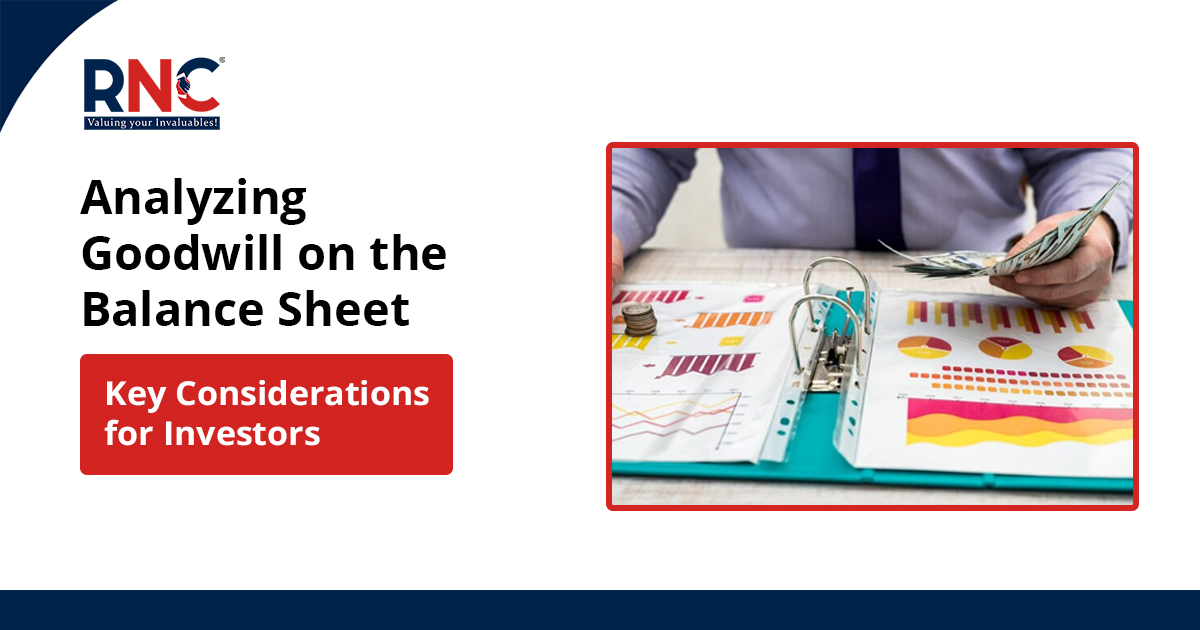
Goodwill is frequently encountered in financial statements, particularly on the balance sheet. Calculated as the excess of the purchase price over identifiable assets, goodwill reflects competitive advantages and future earnings potential. Understanding goodwill is essential for investors as it represents an intangible asset that can significantly impact a company’s valuation and financial health.
In this blog post, we will explore the concept of goodwill, its significance, how it is calculated, and key considerations investors should consider when analysing it.
What is Goodwill?
Goodwill is an intangible asset that represents the premium a company pays for acquiring another business above the fair market value of its identifiable tangible and intangible assets. It includes factors such as brand reputation, customer relationships, intellectual property, and employee talent, which contribute to the acquired company’s value beyond its tangible assets.
How is Goodwill Calculated?
Goodwill is calculated as the difference between the purchase price of an acquired business and the fair value of its identifiable net assets at the time of acquisition. The excess amount is recorded as goodwill on the acquirer’s balance sheet if the purchase price exceeds the fair value of identifiable net assets.
Significance of Goodwill
Goodwill holds several significances in various contexts:
Brand value and reputation: Goodwill often reflects a company’s brand strength and reputation in the market. High goodwill indicates that consumers perceive the brand positively, leading to increased sales and market share.
Competitive advantage: Companies with substantial goodwill may possess a competitive advantage over their peers. This advantage could stem from superior technology, innovative products, or strong customer loyalty, enhancing the company’s long-term prospects.
Mergers and acquisition activity: Goodwill plays a crucial role in mergers and acquisitions (M&A). Acquiring companies pay a premium to obtain strategic assets or enter new markets. Goodwill reflects the value attributed to these synergies and growth opportunities.
Financial health assessment: Goodwill is a key indicator of a company’s financial health, influencing investor perception and valuation metrics. Understanding the significance of goodwill is essential for making informed investment decisions and evaluating a company’s growth potential.
Investors’ confidence: Goodwill’s impact on investor confidence and stock prices is significant. High goodwill relative to assets signals strong intangible value, boosting confidence. Yet, excessive or overvalued goodwill can raise concerns, leading to stock price volatility.
Key Considerations for Investors
Investors need to consider several key factors before making investment decisions:
Sustainability of Goodwill
Assessing the sustainability of goodwill involves evaluating whether a company’s positive reputation and intangible assets will endure over time. This assessment considers various factors, such as shifts in consumer preferences, advancements in technology, and changes in regulations, that could impact the value of these intangible assets.
Investors should examine a company’s operations and industry dynamics to understand how strong its goodwill is. By understanding the potential risks to goodwill sustainability, investors can make more informed decisions about the long-term viability of their investments. They can anticipate any challenges in preserving the company’s intangible value.
Impairment Risk
Impairment risk refers to the possibility that a company’s recorded value of goodwill may exceed its actual worth. Goodwill is subject to regular impairment tests to assess whether its carrying value exceeds its recoverable amount.
If impairment occurs, it indicates that the company may have overpaid for acquisitions or experienced a decline in the value of its intangible assets. Monitoring impairment charges is essential for investors as they serve as red flags for potential weaknesses in the company’s financial health or strategic decision-making.
Understanding the reasons behind impairment charges can provide valuable insights into the company’s performance and the effectiveness of its acquisition strategy.
Disclosure and Transparency
Disclosure and transparency in financial reporting are critical for investors to understand a company’s goodwill and the factors influencing its changes over time. Companies must provide detailed information about the composition and changes in goodwill in their financial statements.
By carefully examining these disclosures, investors can gain valuable insights into the reasons behind fluctuations in goodwill, such as acquisitions, divestitures, or shifts in market conditions. This transparency enables investors to assess the quality of management’s decision-making regarding acquisitions and evaluate the potential impact of goodwill on the company’s financial performance and valuation.
Industry Comparisons
Comparing goodwill levels across companies within the same industry allows investors to benchmark a company’s competitive position and acquisition strategy relative to its peers. It’s important to understand that different sectors depend on intangible assets to various extents.
Therefore, comparisons should be made within each industry’s norms and dynamics. Industry comparisons can provide valuable insights into the effectiveness of a company’s acquisition strategy, its ability to create and sustain competitive advantages, and its overall financial health relative to competitors.
By understanding how a company’s goodwill compares to industry benchmarks, investors can better assess its competitive position and investment potential.
Cash Flow Generation
While goodwill represents potential future economic benefits, investors ultimately rely on a company’s ability to generate cash flows to support its valuation. A company with high goodwill but weak cash flow may struggle to justify the value of its intangible assets, as these assets ultimately need to translate into tangible financial returns.
Therefore, investors should prioritise analysing a company’s cash flow generation capacity. They should do this alongside evaluating its goodwill to ensure the company can sustainably convert its intangible assets into cash flows.
By focusing on cash flow generation, investors can better assess the quality and sustainability of a company’s earnings and make more informed investment decisions.
Partner with RNC for Informed Goodwill Valuation
Understanding goodwill is vital for investors to assess a company’s financial health, competitive position, and growth prospects. Valuing goodwill directly influences financial decisions and strategic planning. It enables investors to evaluate acquisition strategies, anticipate risks like impairment, and make informed decisions aligned with their objectives.
At RNC, we offer comprehensive valuation services, equipping investors with expertise and tools for informed decisions. Our industry-leading methodologies ensure accurate evaluation and risk mitigation, enabling investors to optimise portfolios and achieve financial goals.
Contact us today for your valuation needs!
